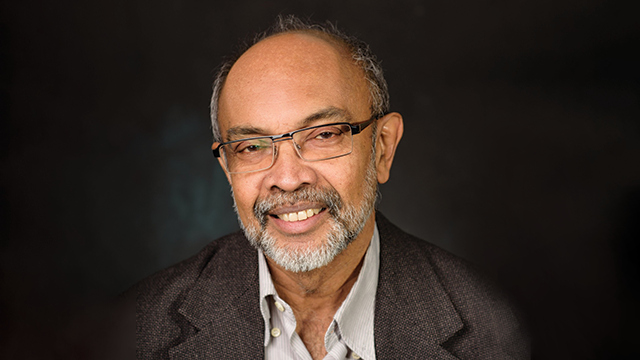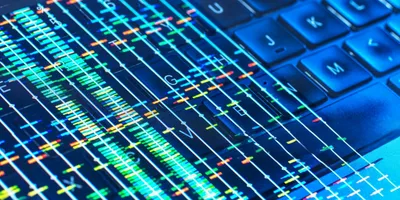
Athula B. Attygalle is a faculty member in the Department of Chemistry and Chemical Biology at Stevens Institute of Technology in Hoboken, New Jersey. Before joining Stevens, he served as the director of the mass spectrometry facility of Cornell University from 1988 to 2001. Dr. Attygalle is internationally recognized as a researcher and an educator for mass spectrometry and chemical ecology. Under Dr. Attygale’s leadership, the mass spectrometry laboratory at Stevens Institute of Technology has become one of the leading centers for gas phase ion fragmentation studies. He has also published more than 200 peer-reviewed research articles.
The Center for Mass Spectrometry at Stevens Institute of Technology is equipped with five mass analyzers incorporating time-of-flight and quadrupolar techniques, and a variety of inlets such as electrospray, MALDI, ApCI, EI, CI, and HePI. The instruments are amenable to a wide variety of organic compounds, including proteins, peptides, amino acids, alkaloids, steroids, flavonoids, saccharides, lipids, nucleic acids, polymers, petroleum products, and organometallics.
Q: Can you explain your role at Stevens and the type of work conducted at the Attygalle Lab- Center for Mass Spectrometry?
A: I do both teaching and research, and we have a group of graduate students working toward PhDs and Masters Degrees. We also have an undergraduate program with a strong emphasis on instrumental analysis. Because we are academics, we have the freedom to take on any challenges we like. Very often, we switch to new directions, and that flexibility allows us to address problems differently than teams in industry, who traditionally have to stay more focused on one area of research.
Q: What sort of education or training for mass spectrometry is offered at Stevens?
A: We have regular courses in chemistry and chemical biology for our undergraduates, and then we have the similar courses for graduates, PhDs, and Masters. Our laboratory produces about one or two PhDs per year. Recently, we have started a new program with a focus on quantitative techniques in biology, which is becoming very popular. We plan to start a new Master’s program focused on analytical chemistry.
Q: Can you elaborate on the variety of spectrometers you have at the lab, and how they help to progress the research being done?
A: In addition to mass spectrometers, the instrument analysis laboratory provides hands-on analytical experimentation for students to get acquainted with both qualitative and quantitative data acquisition. The techniques range from simple light absorption UV-visible spectrophotometers to atomic absorption, infrared, and fluorometry. Many gas and liquid chromatographic techniques, including UPLCs and NMR spectrometry, are also available. All these techniques are used to get additional support to mass spectrometric explorations.
Q: What are some of the top challenges you or your students face when analyzing and interpreting mass spectrometry data?
A: We want to stay at the frontier level, and mass spectrometry is a very dynamic field. Everything that we said maybe two or three years ago—we’ve now had to change our opinions. But that’s how science works—it keeps on improving and self-correcting. At the moment, there are strong challenges in correctly identifying compounds using mass spectrometry. We had a lot of confidence that this was the right tool, but now there are some doubts—for good reasons. The same compound can generate entirely different mass spectra under different instrumental conditions. This makes compound identification by artificial intelligence and library search methods very difficult. We’re trying to address these problems—so that’s where we are.
Another one of the greatest challenges we have is that mass spectrometry cannot separate ions of the same exact mass. However, there are many molecules—under different mass spectrometry conditions—that can sometimes give two or more entirely different mass spectra. If you give such problems to undergraduates, for example, and say identify them, they’ll respond that they’re two different compounds because under normal text book fragmentation rules, they appear to be entirely different. But actually, they came from the same compound. In reality, many compounds exist in many different forms—like Dr. Jeckel and Mr. Hyde—depending on how you put the compound in the instrument, what solvent it is, and many other instrumental conditions can result in different spectra. Traditionally, many organizations that are doing work to establish recommendations for correctly identifying compounds set up certain parameters and rules for the rest of the world to follow. But sometimes, after six months or so of following these rules, they get wrong answers. Sometimes summer spectra are different from winter time spectra. This is a strong challenge mainly because many compounds can form different structures (protomers, deprotomers) and they fragment differently. They cannot be separated by classical mass spectrometers.
Q: What sort of tools or resources can help overcome these challenges?
A: There’s a new hyphenated technique, called ion mobility, which sometimes allows us to separate those different forms of the same compound and then explain why the spectra are different. We have published a couple of new papers, some appeared as front cover features in journals, on this area. There are several groups concentrating on this, but not too many yet because it’s a new and difficult area.
Q: What sort of innovation, changes, or trends have you observed in recent years? How have these changes affected your lab?
A: We are able to get more and more information from samples, but that means there’s a lot of data crunching and additional work that needs to be done in computer chemistry. We still desire many more serious improvements. We will need good computer models so we can at least predict or get data that can agree with our experimental data. Right now, the agreement between experimental data and computer data is not yet perfect. It is improving, but still has a long way to go.
Q: How do you see mass spectrometry evolving in the next five to 10 years?
A: I think there will be new instrumentation that gives us more structural information, for example by ion isolation, and maybe try to get more information such as infrared spectra and newer ionization methods. We are very good at mass determination and analysis, but there needs to be more new efforts in getting more sensitive ion detection. We have developed one technique on our own, which we call helium plasma ionization mass spectrometry, or HePI, similar to DARTMS, which is very popular. I think there will be more ion generation techniques to come, but we still have to improve the percentage of ion generation from a neutral sample. At the moment, most of our samples are simply wasted at the ion source. No technique can ionize even one percent of your sample. So that’s another great challenge.











